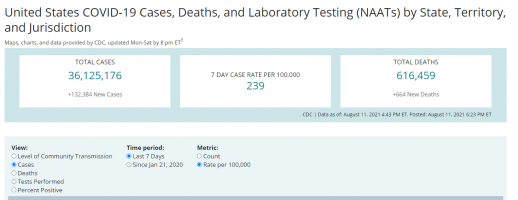Apologies. 98.3%.
I don't think that negates the point I was trying to make.
I'm not sure how comfortable I am conflating the two statistics. This would appear to be a logical fallacy called false equivalency.
One is 99+/-% of people who have fires, which is a relatively small subset of the overall population (a small percentage of a small percentage).
The other is 99+/-% of the entire population (or approaching the entire population as it is an infectious disease).
Let's make up some numbers se we can see the difference.
For instance, let's assume both are 99%, but the percentage of people who have fires is only 1% (99% of people do not have home fires).
So for our virus, I have 1 fatality for each hundred that get sick (again, assuming the entire population gets sick).
For our fires, we have 1 fatality for each ten thousand people. Obviously a large difference.
So, what did we learn? Fires are less infectious than a virus.

 www.propublica.org
www.propublica.org


